A lot of consumers and clients need to connect with your product on an emotional level before they buy it. Numbers and data, even including the amount of five-star reviews your product has, won’t cut it for every member of your audience. You need to make them feel something if you want them to act. There are a lot of empathy examples out there from brands that are getting it right, but you have to adapt them to your brand’s purpose and audience.
There are a lot of ways for brands and marketers to connect with users beyond talking at them and delivering information. Stop trying to feel for your customers — it’s not possible to address their problems if you’re on separate pages. Instead, how can you feel with the viewer and develop a relationship?
The 3 Stages of Empathy
Before you can use empathy in your marketing campaigns, you have to understand the different stages of empathy and how they relate to consumers.
1. Cognitive Empathy: You’re aware of the other person’s emotional state. By conducting audience research and listening intently, you can determine what they’re feeling. You’re paying attention to how your audience feels as a way to collect information, not as a precursor to getting defensive.
2. Emotional Empathy: You engage with the person to share those emotions. In this step, you figure out how to meet them on their level, and you probably create marketing messages to express that. You don’t need anyone to do anything yet, other than notice what you put out there.
3. Compassionate Empathy: Action is taken so you can support the person. During this step, you’re taking action and/or encouraging your audience to take action. Maybe you created a helpful ebook that you want them to download or you’re asking them to watch a YouTube video that explains your product.
6 Ways to Use Empathy in Marketing, Plus Empathy Examples from Real Brands
Every type of business can benefit from empathetic marketing – solopreneurs, small businesses, enterprises, B2B and B2C companies, service providers, retailers, etc. Here’s how to do it, including empathy examples from top brands.
1. Put Yourself in Your Audience’s Shoes
When you think as though you’re your customer, you can see and acknowledge what they’re struggling with, then form the best solutions to meet their needs (not your needs). This includes addressing their pain points, both the ones they have in their daily lives and the ones they’re facing re: your brand. What are they going through in life that you can help with? And if your brand is disappointing them in some way, how do you fix that?
Part of this is listening without reacting. If you find a Reddit or Twitter thread where customers are complaining about your brand or product, it’s tempting to jump in and get defensive. Instead, try to figure out where they’re coming from. Why are they upset? What is disappointing them? What were they hoping for that they didn’t get? How can you fix this?
JetBlue has several empathy examples through their “How not to…” video series. Each video addresses a different annoyance of air travel.
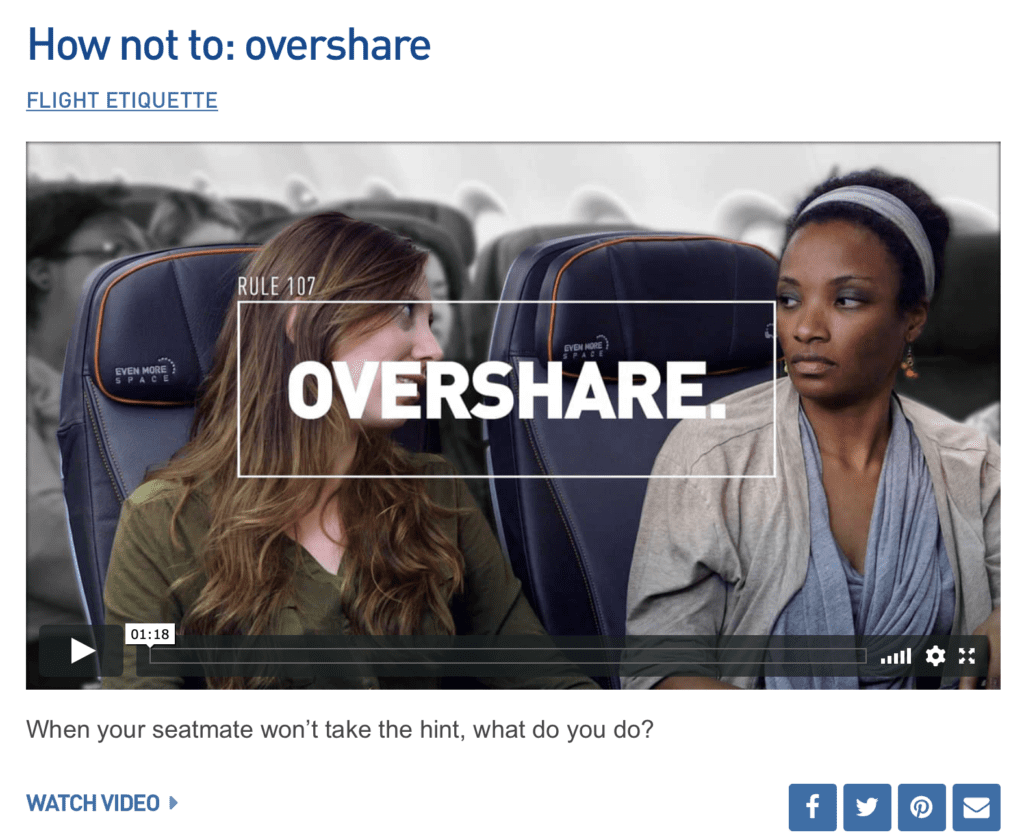
The videos are lighthearted, but the overall message to customers is, “We get it – air travel is imperfect.” By figuratively putting themselves in the airplane seat, JetBlue makes customers feel like they understand what it’s like on both sides of the customer-brand relationship.
2. Tell Your Customers What They Want to Know
Going behind the scenes to show your customer how a product is made takes time. When it comes to companies that make products that customers apply topically or ingest – so, beauty or food companies, specifically – showing customers what they’re putting on or in their body is important. They need to be comfortable with what they’re using, eating or drinking, and your brand is the only one that can provide that peace of mind because you’re the only ones who know the inside scoop.
Lush Cosmetics’ “How It’s Made” series on YouTube is full of these empathy examples. Their products are cruelty-free, handmade and vegetarian, and their videos dive into exactly what goes into each product.
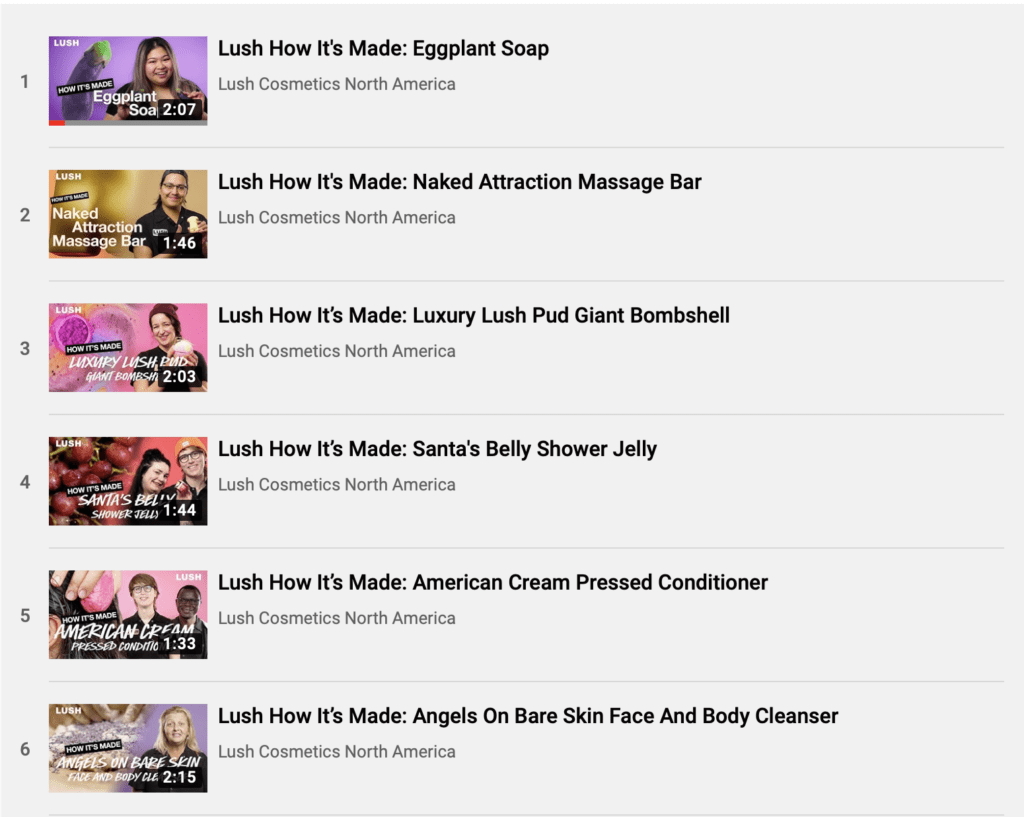
This isn’t the type of content that can be quickly put together. You have to research, plan, create and promote the content. You have to offer a thorough dive into how your products are made. That can feel like a waste of time to some marketers.
It isn’t, though. Even if that particular piece of content doesn’t lead directly to a sale, you’re doing something even more important. You’re laying the base of the brand-customer relationship, and you’re saying, “I know what you want to know, and I’m going to give it to you.”
3. Educate the Customer
Educating your audience is a highly empathetic move. Education leads to confidence and empowerment, and when your brand provides that education, you’re showing your audience that you want them to do better. In turn, customers think of you as a source they can trust, and they’ll look to you for more information and advice when they need guidance again. You’re not just providing something for the customer to use or buy; you’re giving them a roadmap for helping themselves in the future. In between purchasing for your company, you’ll still stay central in their minds, because your brand was the one that helped them get where they are.
Education can be thorough and in-depth, like a course you offer customers, or it can be more basic, along the lines of tips and hacks. You can help them become a better person or provide steps for a DIY project. Or, you can simply solve a headache or remove a pretty low barrier that’s preventing them from buying from your company. Whatever you do, it should be free, helpful and purposely lacking direct “buy this” messaging.
JetBlue does this with their kid-friendly lessons, like this one about how to read and make a compass. While they’re not outright asking for people to book a ticket, the overall feeling is, “Hey, we love kids, so we’re the family-friendly airline to trust.”

Lush did this in a way that ties more directly into their products with their 15-minute At-Home Facial infographic on Pinterest. You don’t need their products to follow the steps, but if you’re missing some must-have items at home, they have suggestions for what to buy.
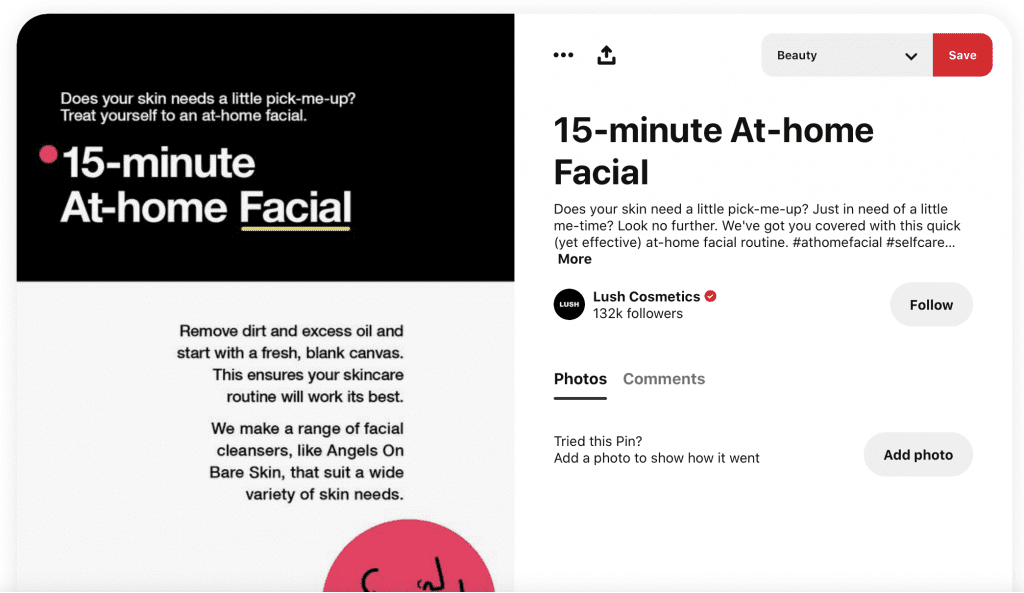
4. Show Beauty in Mundane Moments
Do you sell a pretty basic (maybe boring?) product or service? These types of businesses can be hard to market, especially if there’s a lot of competition out there. Figure out how what you sell fits into regular, everyday life, and how your product or service can be a part of those little miracle moments we all live for – laughing your head off with friends, going on an impromptu road trip, waiting for a first date…
What are the regular life moments that are so commonplace and shared that they’re overlooked? And how can you extract the magic from them and show just how important life as normal really is?
This one’s a little tricky because you can’t just throw your product into any ol’ life moment and have it hit home. For example, Extra tried to do that with this social media post, but it misses the mark. Why? These items don’t really connect. The sleep mask is for bedtime, the roller is for skincare and the two circular décor items are for…nothing. Then there’s the gum, tossed in as though it seamlessly goes with any of it.
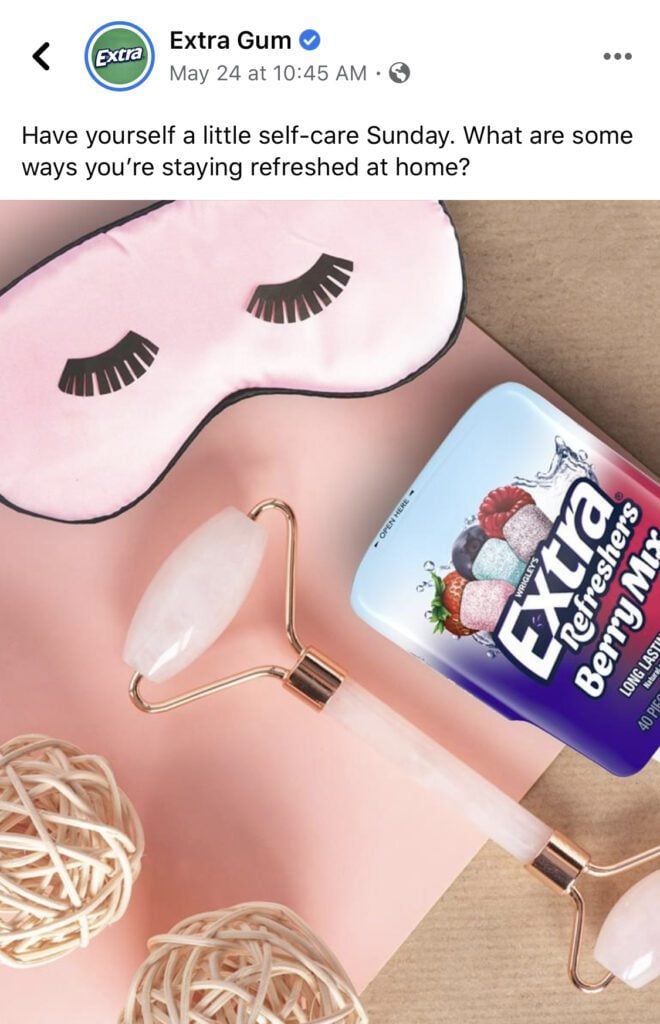
They got it a lot more right with this ad, though. As someone who has packs of gum everywhere I could need them, this one makes sense to me. Plus, if you love autumn, this cute illustration will get you excited for crisp weather and everything that comes along with it.
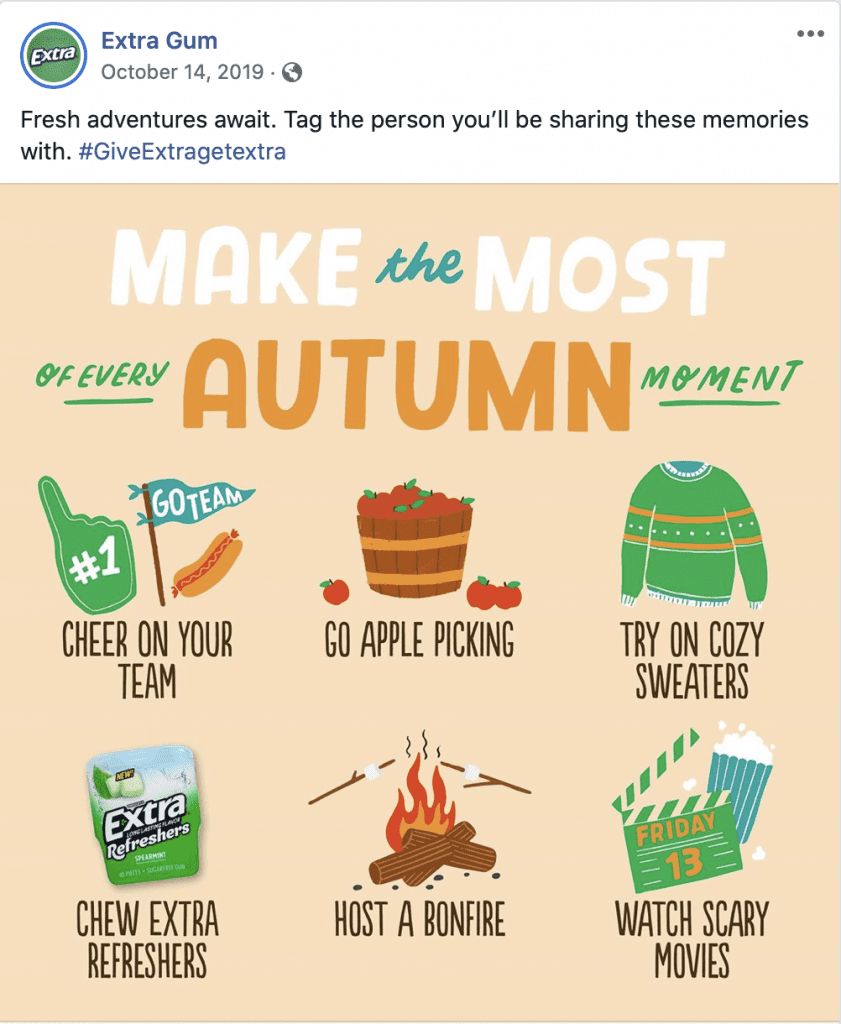
5. Make Your Marketing Interactive
Interactive marketing encourages people to invest, and when someone invests in your brand, they’ll value it more. Furthermore, these types of marketing campaigns can quickly spread the word because users will often share to their own platforms, too.
You have to make it easy for the person to interact, though. Too many steps will prevent them from doing any of it. You also have to make it very clear what they should do.
This template in Lush’s Instagram Highlights is cute, and if you want to take the time to (1) save it, (2) fill it out and (3) repost it, that’s great. How many people are actually going to do that, though? Something like this may be better suited to an event that it can be tied with, like National Pamper Yourself Day.
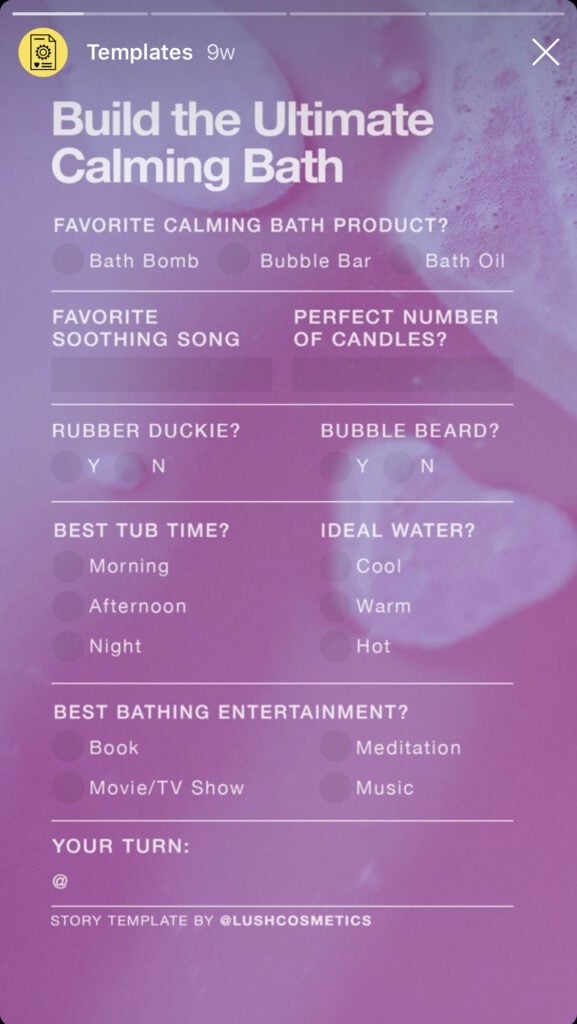
Extra created an interactive marketing campaign with #ExtraDedications. They encourage people to dedicate a song to someone they’re grateful for. You can then click over to the branded radio station and listen to the dedications and songs. Something like this can work well because people like to highlight the people they care about, especially in a public way. It makes the other person feel good, which makes you feel good.
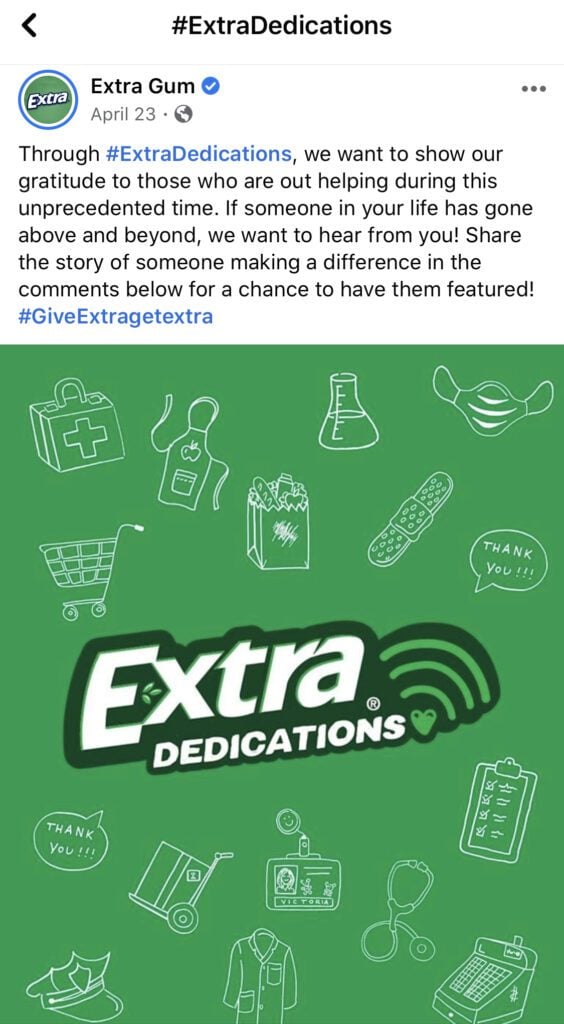
6. Use User-Generated Content to Honor Your Customers
Possibly the quickest and easiest way to connect with customers is to pull inspiration and content from what they’re already creating. User-generated content (UGC) shouldn’t make up your entire marketing campaign, but it’s an excellent addition, and one you should use regularly. UGC is useful for a number of reasons. You can get ready-to-go content without putting any effort into creating it. By tagging the original creator, you’ll expand your reach. You show your entire audience base that you’re in tune with what they’re doing, and you excite them with the promise of possibly featuring their content, too. Plus, you give your audience ideas for how to use your products. J.Crew does this a lot, as do many fashion brands.

Wrapping Up: Why You Should Apply These Empathy Examples to Your Marketing
When you use empathy to connect your brand, product (or service) and customer, everyone will be on the same page emotionally. That’s the best place for a decision to be made. And if you think about it, the only way to get worthwhile customers is to connect with them through empathy. Yes, you can use all the marketing tricks in the book to get people to make a one-time purchase, but that’s a lot of effort for a one-off customer. By taking the time to develop relationships with your customers, you’ll get back what you put in tenfold. The customers you most want are the ones that know you care about them as humans, not just walking dollar signs, because those are the customers who will become brand advocates, word of mouth marketers and loyal patrons.
It’s difficult to create an empathetic marketing campaign and apply any of these empathy examples if you don’t have a handle on your brand’s purpose. Check out my article about How to Write an Awesome Value Proposition for Your Project or Brand.
Featured Image via Honza Hruby / shutterstock.com









Thank you for providing us with example about Empathy, really love the extra gum visuals. Great post thanks as always